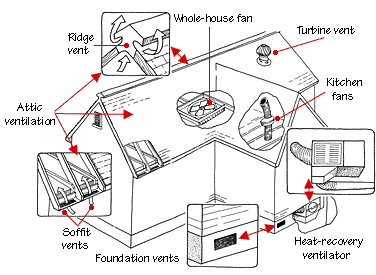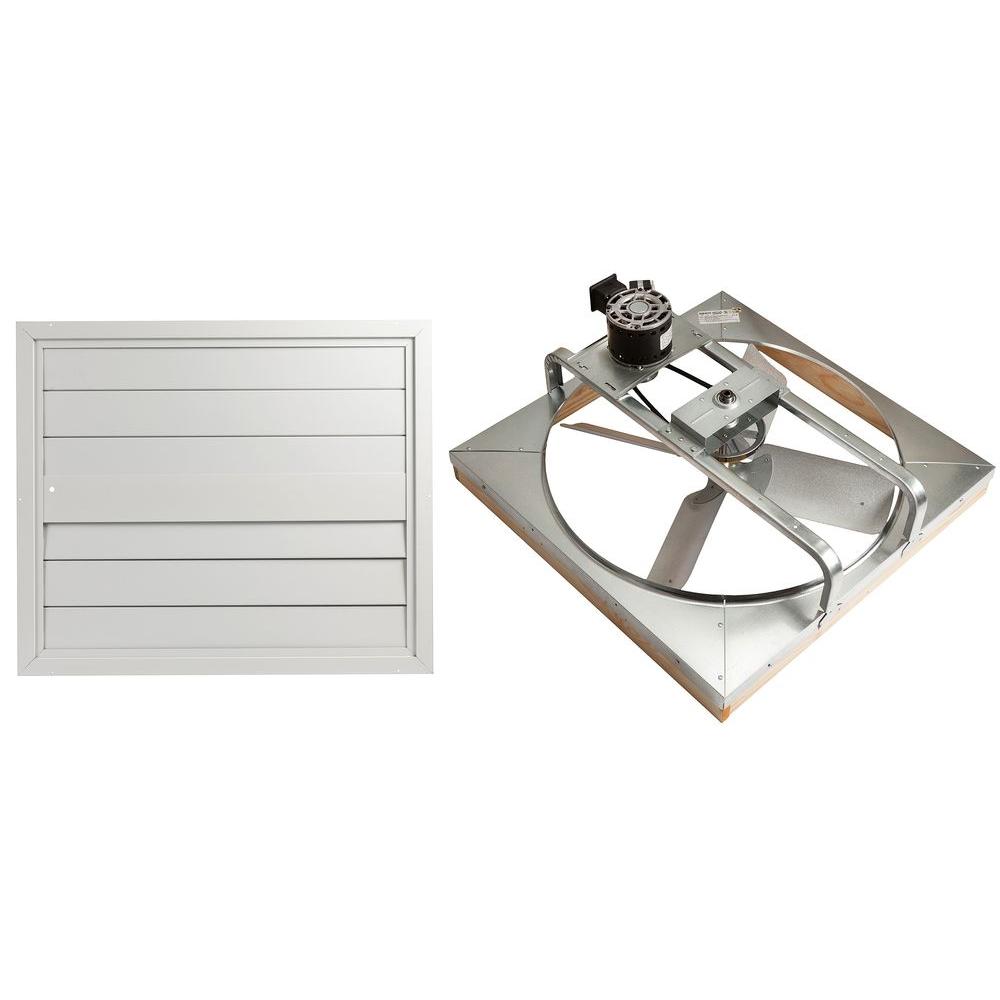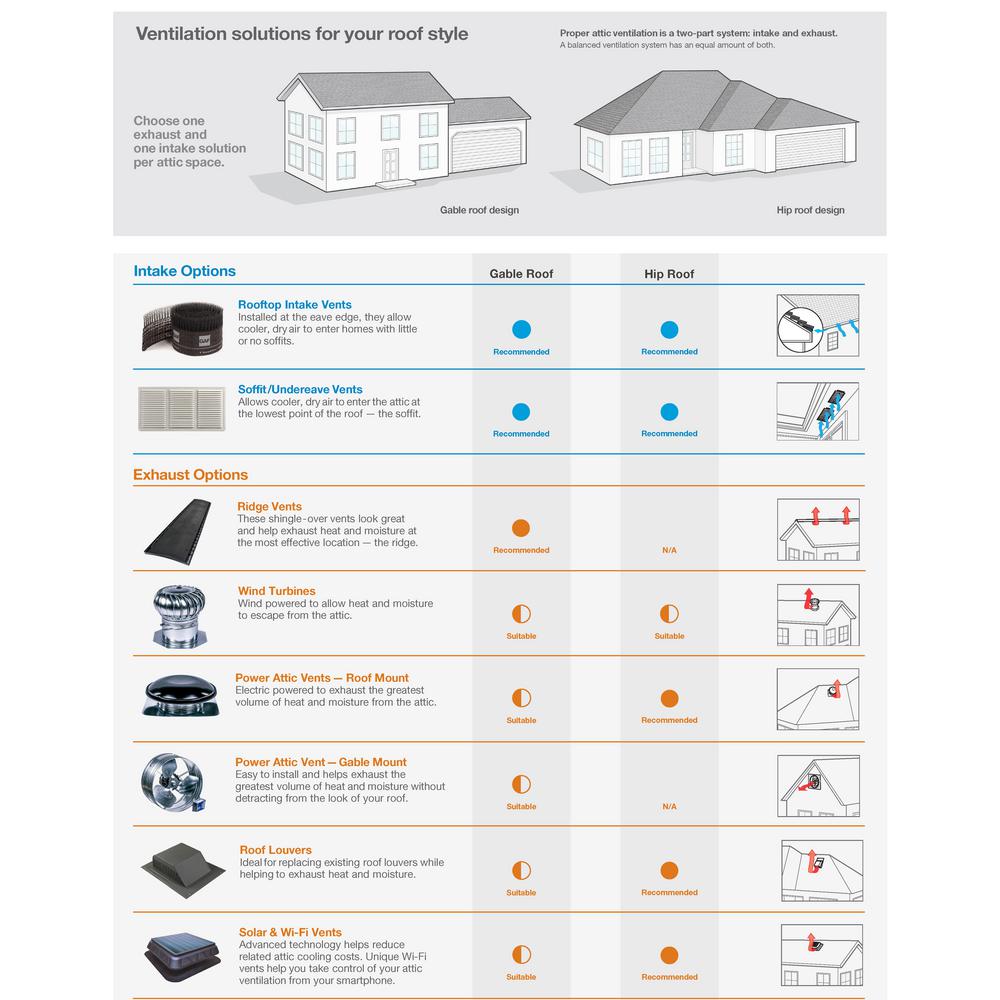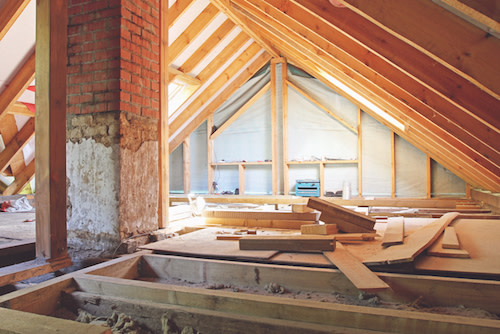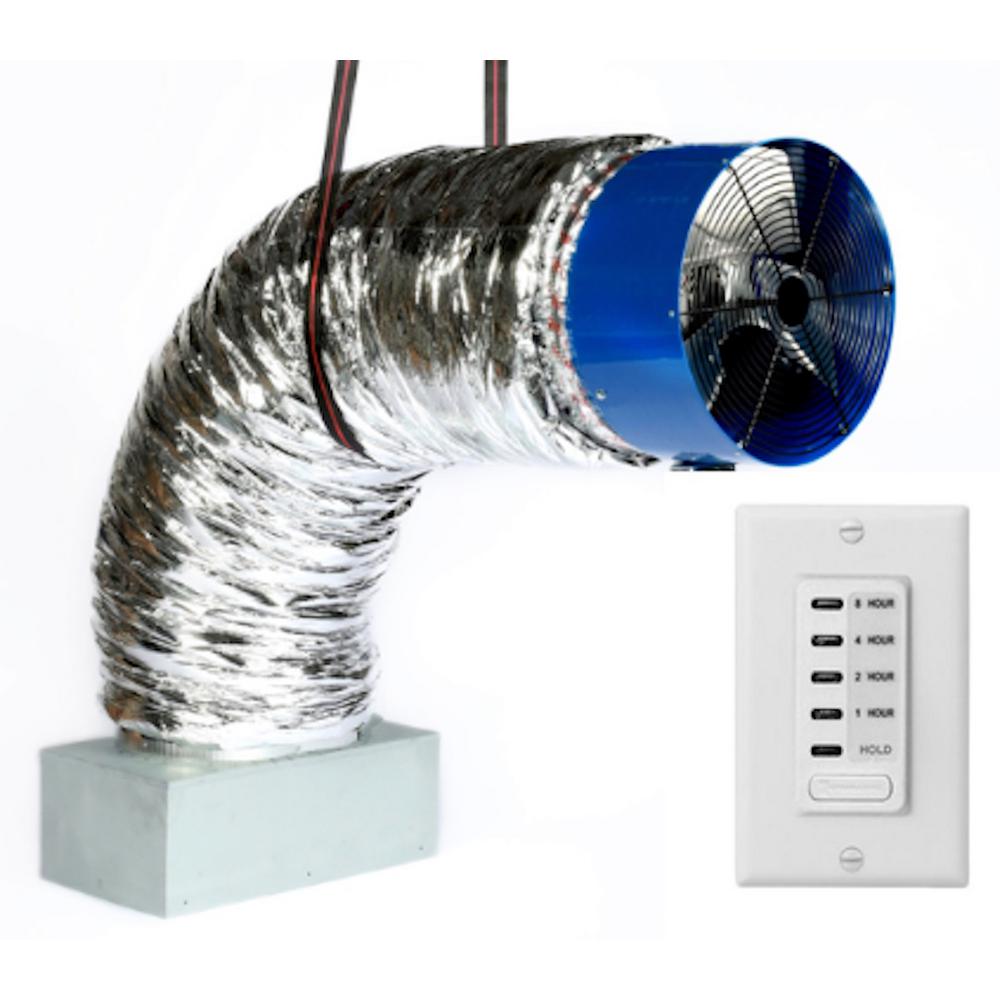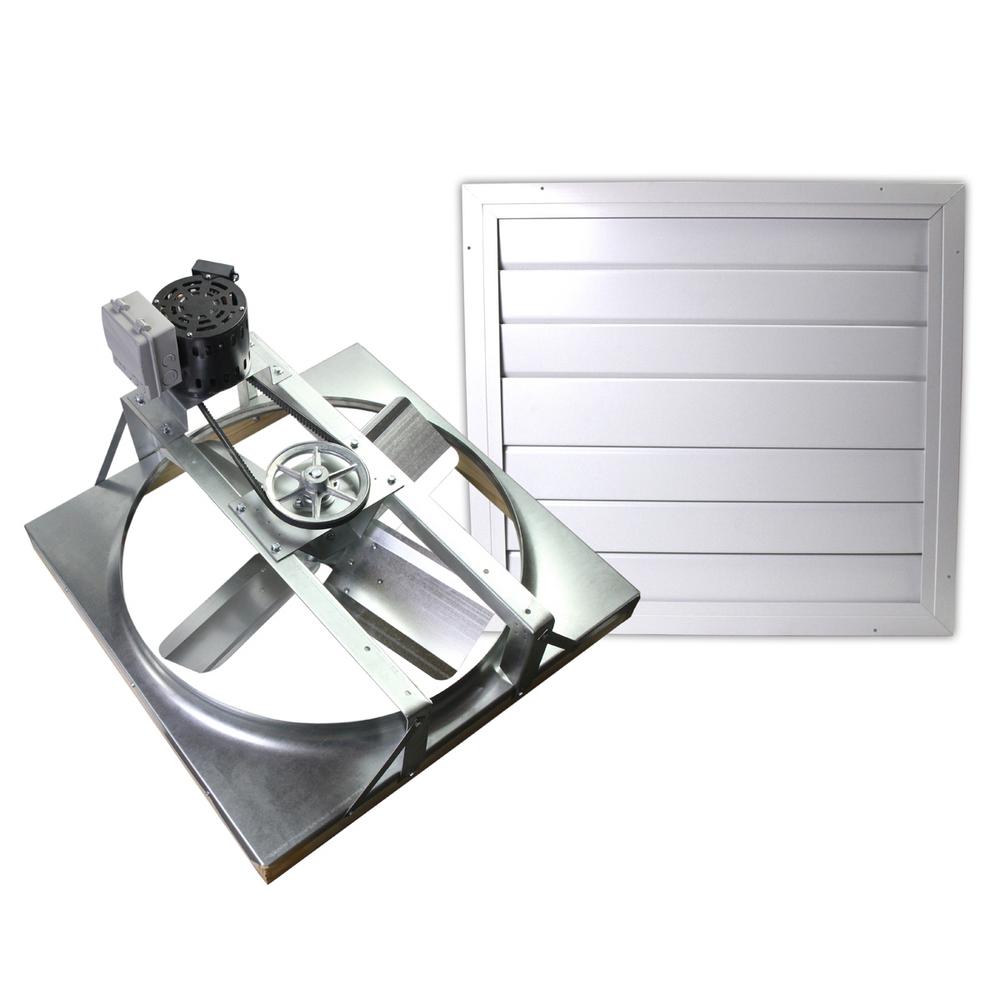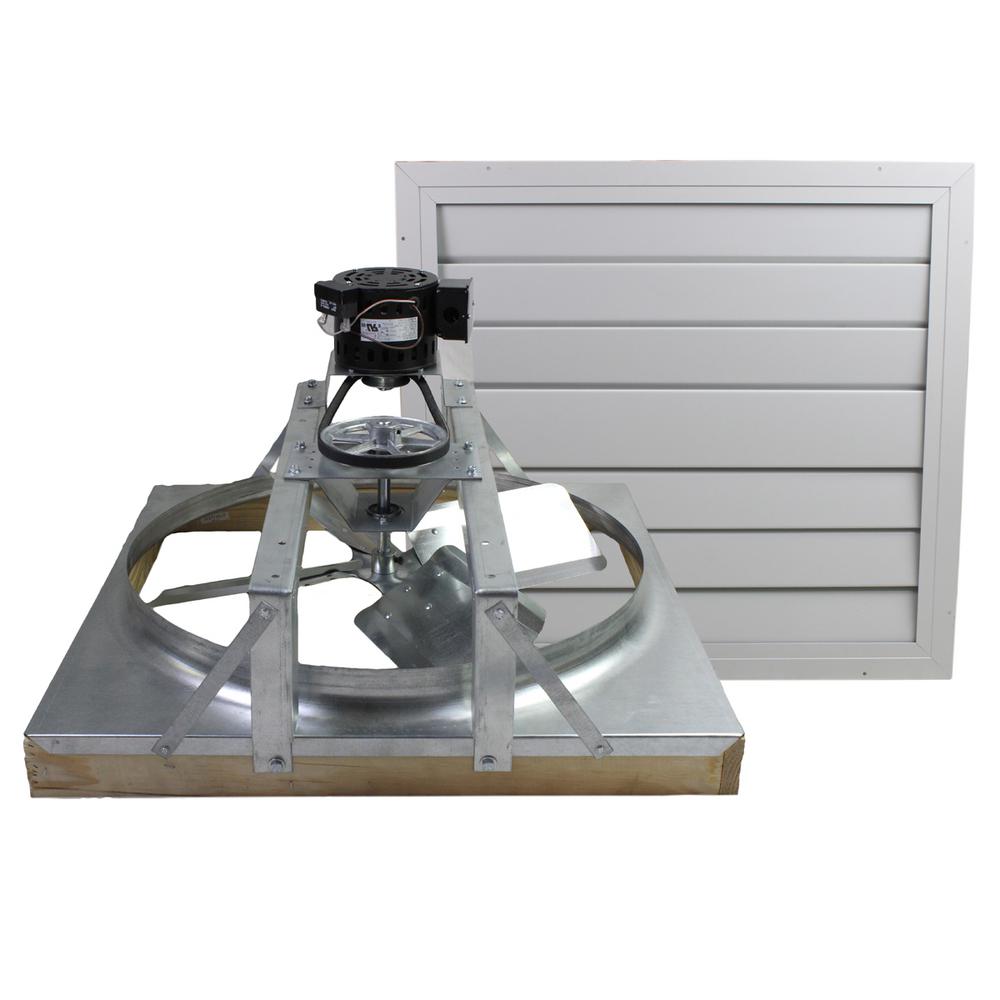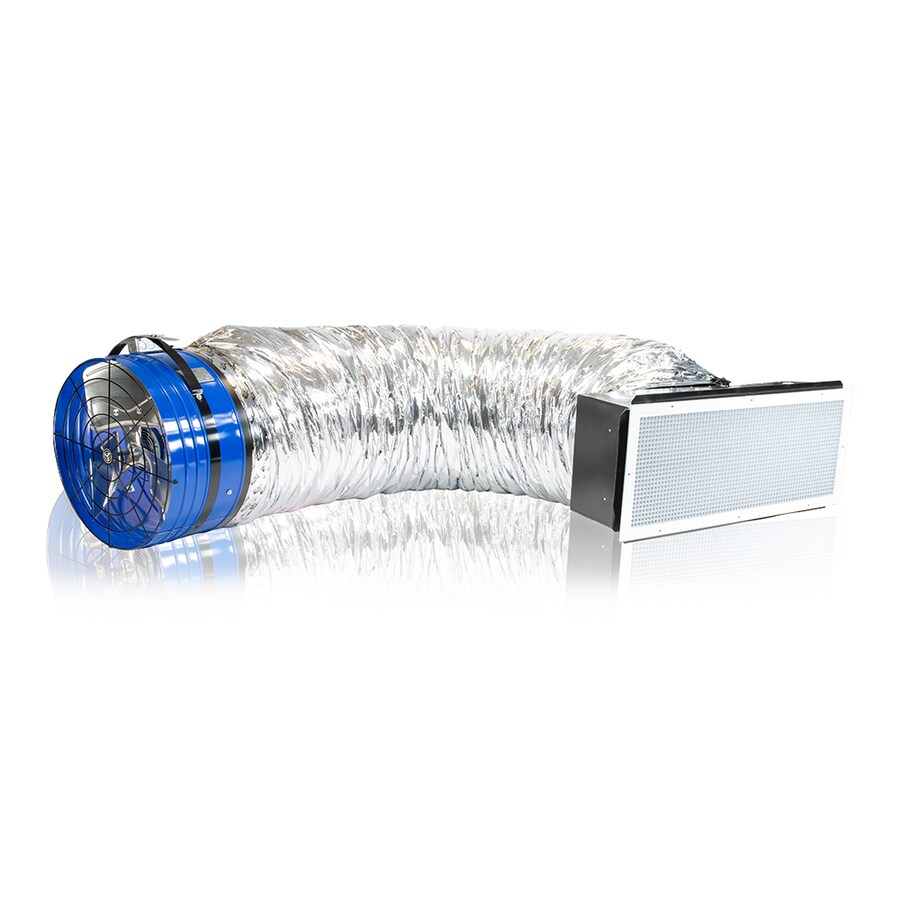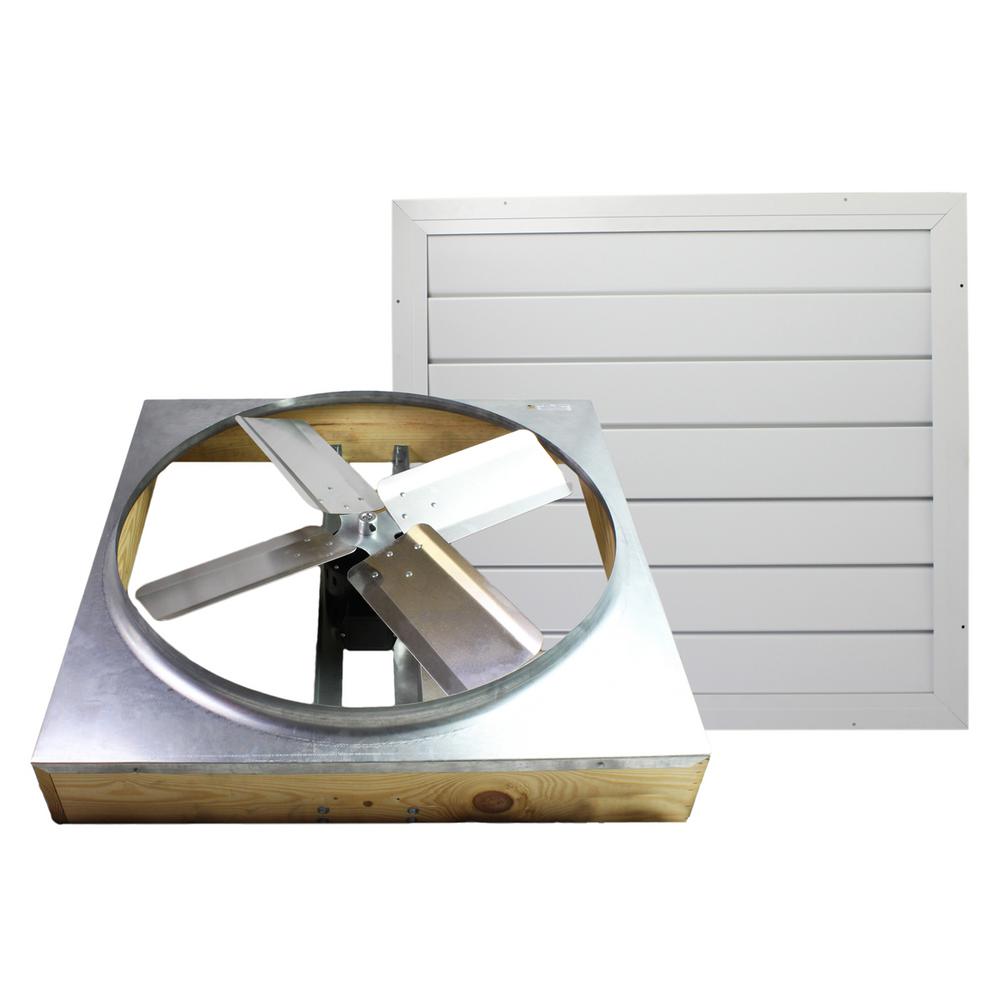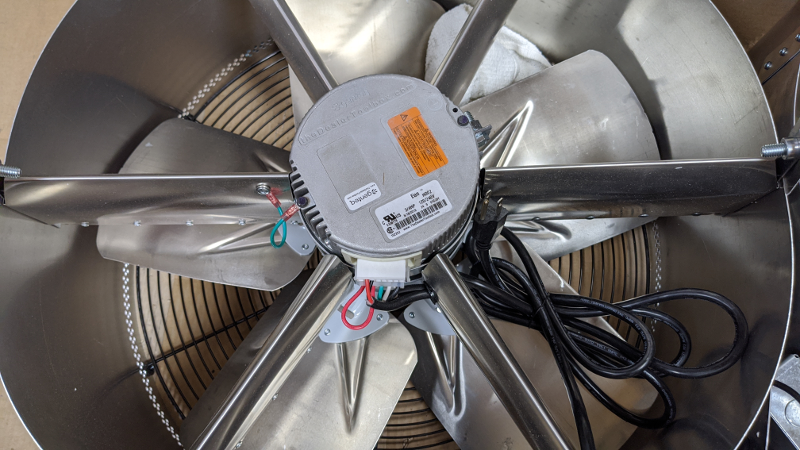Proper attic ventilation consists of a balance between air intake at your eaves soffits or fascias and air exhaust at or near your roof ridge.
How much roof venting for 6000cfm house fan.
Of vent for every 300 sq.
In order to facilitate this exchange of warm and cool air the general rule of thumb suggests installing at least 1 sq.
It can be controlled by a thermostat or moisture monitor.
And this guideline you ll need a minimum of.
Whether exhausting air or bringing fresh air into a structure the calculation produced should help to figure out the size of fan s required to accomplish the air exchanges needed.
Blades spin within the unit to expel air from the attic until the right temperature or moisture level is reached at which point it will automatically shut off.
A powered exhaust vent is much like a roof mounted exhaust fan.
Federal housing authority recommends a minimum of at least 1 square foot of attic ventilation evenly split between intake and exhaust for every 300 square feet of attic floor space.
You can only bring in as much air as you can discharge out of your attic vents.
This fan calculator is typically used to calculate the cfm or cubic feet per minute of air exchange that may be desired in a building.
Making sure you have adequate roof vents which allow the hot attic air to escape is important.
Near ridge of the roof.
Based on your 1100 sq.
Why having sufficient roof venting is important.
To calculate the ventilation required with such a vapor barrier divide the square footage of the attic by 300 instead of 150.
And since just about all attics are vented the pressurized attic air is then naturally pushed outside through those vents.
Static ventilation needs may be reduced if you have an uninterrupted ceiling vapor barrier installed with a rating of 0 1 perm or less.
However without enough venting area pressure can build up slowing down airflow and reducing efficiency potentially pushing hot attic air back into your living.
Special bathroom fan roof vents with an internal damper that opens only when the fan is blowing will send moist air outdoors and keep cold air out of the house.
The water will condense and drip into the insulation below and perhaps into the house.
As the air flows into your home and through your attic your roof vents allow the hot attic air to escape from your home.
Tips for assessing your needs.
A whole house fan brings outdoor air into your home which is measured in cubic feet per minute.
It s all about balance.
Your airscape needs to breathe a whole house fan is designed to move air from your house into your attic.
